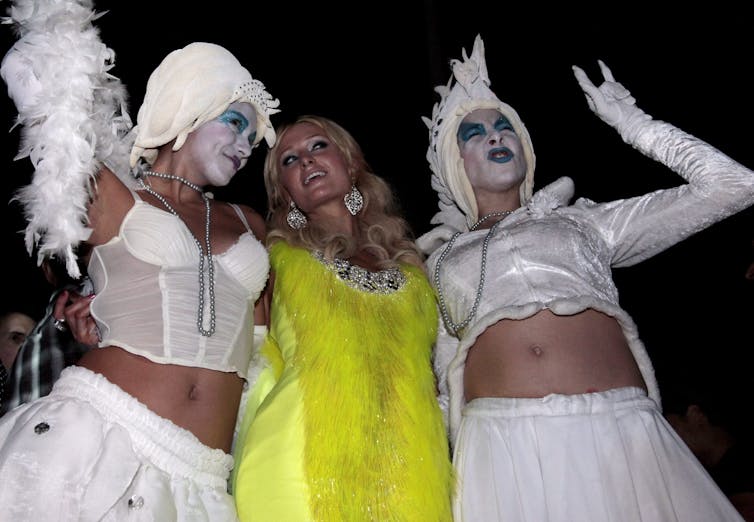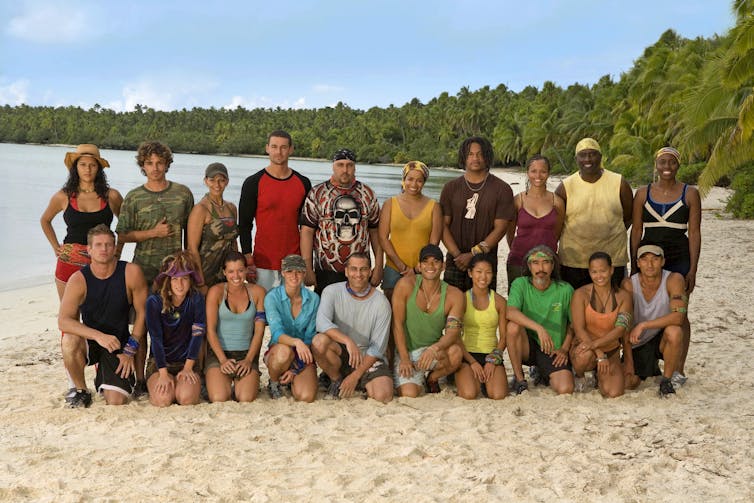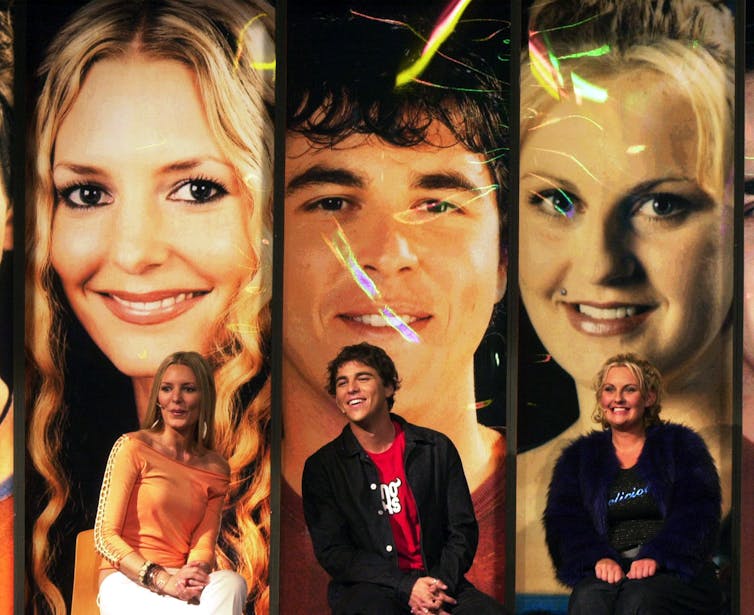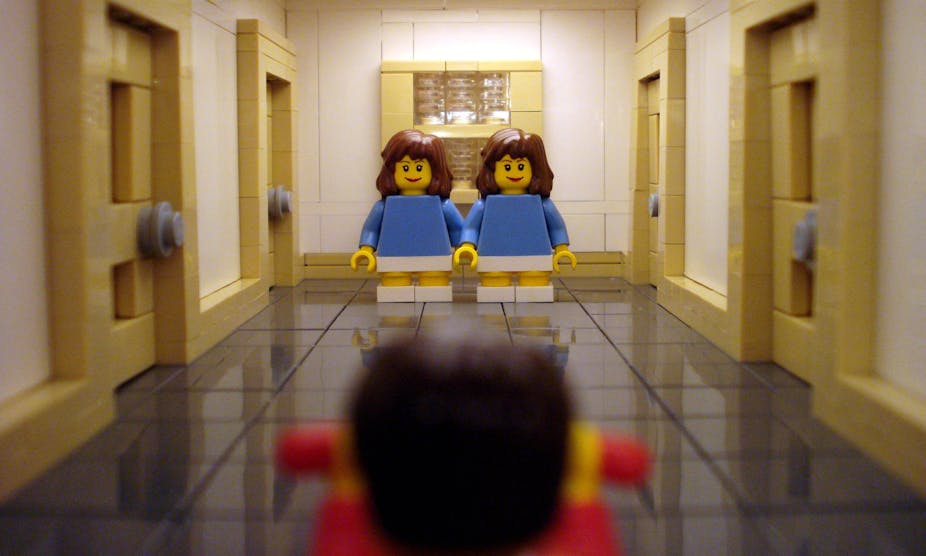Yesterday the Danish Toymaker Lego announced its plans for a reality TV show to be launched in 2015, rumoured to be based on the idea of Master Builders, the top “construction workers” in the insanely successful Lego Movie earlier this year.
Surely the show will be more about the minifigs than the personalities of the people putting them together? Well, no, recent history would suggest otherwise.
As Paris Hilton famously said of her reality program, which ran from 2003 to 2007:
Simple Life is a reality show and people might assume it’s real. But it’s fake. All reality shows are fake basically. When you have a camera on you, you are not going to act yourself.
Television has changed dramatically in the past two decades.
Back then there were a small number of cable or satellite channels and a few terrestrial networks broadcasting standard formats, based upon film studio production methods, of situation comedies, police/crime procedurals, quizzes, cartoons, and so on, using professional actors or presenters, working from scripts.

Today, a very large proportion of its programming in all TV formats (free-to-air, cable, and satellite) could be meaningfully described as “reality” – as distinguishable from scripted shows with relatively high production values.
Reality TV covers a wide variety of formats such as personal makeovers, “Mr Right/The Bachelor” programs, survival, talent contests, cooking contests, home renovation contests, weight reduction contests, “real housewives of X city”, docusoaps (programs that appear to be documentaries but have the feel of soap operas), dancing competitions, job-seeking contests …
The origins of reality TV
One of the tropes of reality TV - the filming of non-actors in actual settings, usually entailing some trick or prank, must go back to Alan Funt’s 1948 Candid Camera, a format revived by MTV with Punk’d in 2003.
But, like the hidden camera experiments of psychologist Stanley Milgram, those shows did not carry the taint of suspicions of it all being a put-up job - which takes us back to the question of what reality is.
In some respects, reality TV, or the vague feeling that we are watching something synthetic, goes back to an American historian Daniel J. Boorstin, who in 1962 produced a book called The Image: A Guide To Pseudo-Events In America.
Boorstin attacked “pseudo-events” such as press conferences, presidential debates (which existed merely to be reported) and publicity stunts concocted by public relations and advertising professionals.
He also attacked the manufacture of celebrity – “a person who is known for his well-knownness” (later known as “famous for being famous”). His insights are almost eerie in their predictive power of “celebrity-industrial complex”, within which much of reality TV exists.
Media academic Misha Kavka tracks the next phase of reality TV from 1999 onwards, calling it the age of Surveillance and Competition, with programs such as [Big Brother](http://en.wikipedia.org/wiki/Big_Brother_(TV_series) and [Survivor](http://en.wikipedia.org/wiki/Survivor_(U.S._TV_series).
A series of industrial strikes by US actors, writers and extras in the late 1980s and early 1990s helped precipitate the search for production that would step around unions and search for lower-cost formats. Reality TV helped solve those.

Companies such as the Dutch company Endemol, E!, [Bravo](http://en.wikipedia.org/wiki/Bravo_(U.S._TV_network), and MTV were able to produce reality format shows at much lower costs than mainstream production houses and networks.
Endemol developed Big Brother and franchised the show throughout the world. Over time it developed more sophisticated programming, including conventional dramas and comedies, including Australia’s Offspring.
Franchising of formats has provided a substantial source of income for developers.
Survivor, a game format show where people are “marooned” in harsh environments, launched in 1997 as a Swedish show, and debuted on US TV in 2000. It has been a ratings winner for more than a decade. Early morphings of reality TV (perhaps helping lower the bar of what was acceptable on TV) were “Trash TV” programs such as the talk shows of Maurie Povich and Jerry Springer.
Ordinary people and anti-talent
Kavka argues that “ordinary people” who appear on reality shows sometimes become celebrities themselves, but not always in ways they had anticipated.
Sara-Marie from the first series of Big Brother in Australia, who had been nominated for eviction six times before finally being voted out, was greeted on her exit with screams of adoration by a nation keen on replicating her joyful “bum dance” in pink pyjamas and bunny ears.

None of these sudden celebrities could be described as having talent. On the contrary, the very thing they became famous for - ignorance, malapropisms, turning one’s bottom to the camera and slapping it - could be better described as “anti-talent”.
Ray Richmond of the Hollywood Reporter counted 18 casting staff in the pre-production of a Gordon Ramsay cooking show:
Why does a program populated primarily by the actual employees and customers of real restaurants need 18 people to cast it? If the casting department’s job is strictly scouting out the eateries and judging charisma and on-camera appeal, are they not in fact conducting auditions?
To a certain extent, then, the scene we see on screen - staff, angry chef, customers - is all pre-arranged. American media critic Jennifer Poszner has described the way reality TV producers will often look for stereotypes to cast – such as the so-called slut or the dumb jock – so role-taking on the part of participants, at variance from their normal behaviour, seems to be the norm.
Contestants on the Idol/Voice franchises sometimes appear in Ford commercials, thus breaking down the barriers between show and commercial breaks - a weird inversion of product placement.
When Survivor cast member Jerri Manthey appeared on a 2004 interview show, the audience could only focus on the manufactured persona of Manthey as a villain on the show and booed her off: as she fled, she cried “We’re real people too!”
Humilitainment and schadenfreude
It is also true that the confected conflict built into many reality shows leads to what has been called “Humilitainment” - the entertainment value we apparently are meant to derive as contestants are bullied, critiqued and undergo rituals of shame, degradation and embarrassment as they are excluded from a competitive situation - expelled from Reality Garden of Eden.
As Ben Pobjie observed about Masterchef in the Sydney Morning Herald:
But look, the important thing is: somebody is going to cry.

Some analysts have linked this phenomenon to that of the German concept of Schadenfreude - the pleasure one derives from the suffering of others. This is often exacerbated by the absurdly melodramatic pausing of judges giving their in-or-out verdict on the contestants.
The economics of celebrity is also tied up with how money is made out of the shows.
The Kardashian family produces books, clothing brands, nail polishes, perfumes, diet supplements, cosmetics and clothing boutiques. Endorsements of other products earned them US$65 million in 2010. Social media accelerated these processes.
Additional money flows into the coffers when shows split revenues with telephony service providers viewers use to phone or text in to vote for a contestant. Kavka argues that once a person has spent money on a call, they are more likely to spend money on the iTunes download, a single, an album or a ticket to a live performance - in other words, they become emotionally invested.
Pop culture scholar Leigh Edwards points out that Coca-Cola thinks it is worth US$64 million a year to have Coke containers in front of the judges of American Idol, another example of product placement.
Perhaps crucially, reality TV is so much cheaper to produce than conventional high-production value shows - anywhere from 50% to 10% of the cost.
Constructing a Frankenbite
While much of reality TV seems to be live, to be happening in real time, such is often not the case.
Shows such as The Apprentice may have a shooting period of five months, and even the talent shows may have multiple re-takes. On some shows such as Big Brother and the Kardashians, hundreds of hours of tape or film may be shot, which means editing becomes very important.

Because so much film is shot in reality programs, editing assumes a greater importance than it normally would. Here, Jeff Dawson discusses some tricks of the trade:
So what is a Frankenbite? Simply put, a Frankenbite is an interview bite that has been CONSTRUCTED (capitals in original) from fragments of otherwise unrelated interview material. It is a sentence or series of sentences MANUFACTURED in the edit, as opposed to a sentence of series of sentences actually captured ‘in reality’ on set. This is called CHEATING. A Frankenbite follows the same logic, but takes it to a more extreme level. In a Frankenbite, words - even word fragments - are elements to be drawn from and manipulated any which way needed to best tell the story.
He offers some hypothetical monologue from Keeping Up with the Kardashians:
Kim: I buy couture and I love it.
Some people might really hate me for saying that.
Khloe is the youngest. Though if you ask her, she says she’s the most mature. And she looked at me like … stand up! You can’t sit there all day!
Frankenbite: I hate Khloe. I really can’t stand her.
On a Bachelor-type show, Joe Millionaire, editors re-cut audio to make it sound like the male and a female contestant were having sex in the woods, when that was not true. It’s amazing that this is legal in the US.

Many people who participate in reality TV programs quite enjoy the experience, but there are several dark sides. US journalist Stacy Lambe tracks the number of reality “stars” who ended up doing pornography, while Hollywood Reporter in its analysis of “train-wreck TV” raises “questions about reality’s exploitation of the sick, weak and mentally ill as insiders reveal a one-sided dynamic where the ‘star’ almost always loses”.
This is mainly about the contrast between the very low pay of participants and the millions earned by producers.
The reality of reality is therefore often grim: while there have been tens of thousands across the planet who have participated in the talent show franchises, there have only been one or two that have had some type of major success (but not so much of late), such as Kelly Clarkson and Susan Boyle, which is not a spectacular average.
Many talk of this being a golden age of television, with high-budget, high production values, high-concept shows such as Game of Thrones and Breaking Bad. But there seems to have been a hollowing-out of shows in the middle, with low-cost reality TV at the other end of the spectrum.
But let’s not get snooty: reality/unreality TV “stars” are the sages of our age. Sit back, and enjoy their wisdom.
And if that fails, crack out your Lego set and get building.

